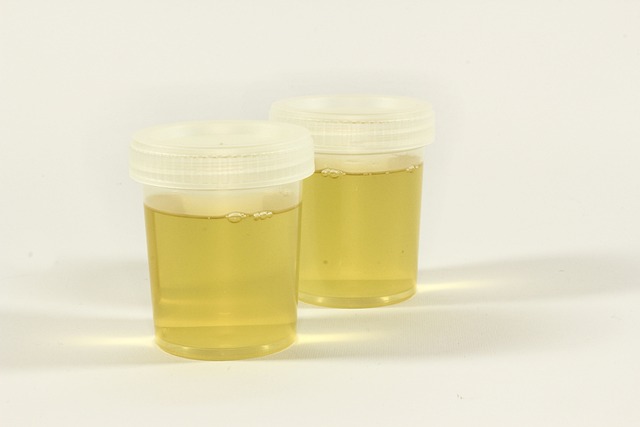Hemoglobinuria: Unexpected Signals You Must Not Ignore
Hemoglobinuria is a rare but serious condition that may silently signal underlying health issues. While often unnoticed in early stages, certain unexpected symptoms could point to a more significant problem. Understanding these signs is essential for timely diagnosis and treatment. This article uncovers the key warning signals of hemoglobinuria and what they could mean for your health.

Hemoglobin in urine occurs when red blood cells break down and release hemoglobin into the bloodstream, which then filters through the kidneys. This process can result from various conditions, some benign and others requiring immediate medical intervention. Recognizing the signs early and understanding when to seek professional evaluation can make a significant difference in health outcomes.
What Are Early Signs of Hemoglobinuria You Might Overlook?
The most visible indicator of hemoglobinuria is a noticeable change in urine color. Urine may appear pink, red, brown, or even cola-colored, depending on the concentration of hemoglobin present. However, many people mistake this discoloration for dehydration or dietary factors, such as consuming beets or certain medications. Unlike hematuria, where intact red blood cells are present, hemoglobinuria involves free hemoglobin molecules, which can only be distinguished through laboratory testing.
Beyond color changes, individuals may experience fatigue, weakness, or shortness of breath, particularly if the underlying cause involves significant red blood cell destruction. Some people report back pain, abdominal discomfort, or fever, especially when hemoglobinuria occurs suddenly. These symptoms often overlap with other conditions, making them easy to dismiss or attribute to less serious causes. Dark urine upon waking, particularly if it clears during the day, can be an important clue pointing toward nocturnal hemoglobinuria, a specific variant of the condition.
How Hemoglobinuria Could Indicate a Deeper Health Issue
Hemoglobinuria serves as a warning sign for several underlying health problems. Paroxysmal nocturnal hemoglobinuria (PNH) is a rare but serious blood disorder where red blood cells become susceptible to destruction by the immune system. This condition often presents with dark morning urine and can lead to complications including blood clots, kidney damage, and bone marrow failure if left untreated.
Other causes include autoimmune hemolytic anemia, where the immune system mistakenly attacks red blood cells, and transfusion reactions, where incompatible blood triggers massive cell destruction. Certain infections, particularly malaria, can cause significant hemolysis and subsequent hemoglobinuria. Intense physical exertion, known as march hemoglobinuria, affects athletes and military personnel who engage in repetitive impact activities. Additionally, exposure to toxins, certain medications, or inherited conditions like glucose-6-phosphate dehydrogenase (G6PD) deficiency can trigger episodes.
Important Diagnostic Steps for Detecting Hemoglobinuria Early
Accurate diagnosis begins with a comprehensive medical history and physical examination. Healthcare providers will ask about recent activities, medications, family history of blood disorders, and associated symptoms. A urinalysis is the first laboratory test performed, which can detect the presence of hemoglobin and differentiate it from intact red blood cells.
Blood tests provide crucial information about red blood cell counts, hemoglobin levels, and signs of hemolysis such as elevated lactate dehydrogenase (LDH) and low haptoglobin levels. A peripheral blood smear allows laboratory professionals to examine red blood cell shape and identify abnormalities. For suspected PNH, flow cytometry testing detects the absence of specific proteins on red blood cell surfaces, confirming the diagnosis. Additional tests may include Coombs test for autoimmune causes, G6PD enzyme levels, and kidney function assessments to evaluate potential damage.
Myths About Hemoglobin in Urine and How to Approach Them
A common misconception is that red or dark urine always indicates a urinary tract infection or kidney stones. While these conditions can cause hematuria (blood in urine), hemoglobinuria has distinct causes related to red blood cell destruction rather than bleeding within the urinary system. Another myth suggests that hemoglobinuria only occurs in people with known blood disorders. In reality, it can develop suddenly in previously healthy individuals due to infections, medications, or extreme physical stress.
Some people believe that if symptoms resolve on their own, no medical attention is needed. However, even transient episodes warrant evaluation, as they may represent early stages of progressive conditions. There is also a mistaken belief that dietary changes alone can address hemoglobinuria. While maintaining good hydration and overall health is beneficial, hemoglobinuria requires medical diagnosis and treatment of the underlying cause. Ignoring persistent or recurrent episodes can lead to serious complications including kidney damage, anemia, and thrombosis.
Treatment Options for Nocturnal Hemoglobinuria
Treatment approaches depend on the underlying cause and severity of hemoglobinuria. For paroxysmal nocturnal hemoglobinuria, complement inhibitor medications such as eculizumab and ravulizumab have transformed management by preventing the immune system from destroying red blood cells. These biologic therapies significantly reduce hemolysis, improve quality of life, and decrease the risk of life-threatening complications. Treatment typically continues long-term, with regular monitoring for effectiveness and side effects.
Supportive care includes blood transfusions for severe anemia, folic acid supplementation to support red blood cell production, and anticoagulation therapy when blood clots develop. For cases triggered by medications or toxins, discontinuing the offending agent often resolves the condition. Autoimmune hemolytic anemia may require corticosteroids or immunosuppressive medications to control the immune response. In severe or refractory cases of PNH, bone marrow transplantation may be considered as a potentially curative option, though it carries significant risks.
Regular follow-up with a hematologist ensures appropriate monitoring of blood counts, kidney function, and potential complications. Patients should stay well-hydrated, avoid known triggers, and seek immediate medical attention if symptoms worsen or new complications arise. Vaccination against certain infections, particularly meningococcal bacteria, is essential for patients on complement inhibitor therapy due to increased infection risk.
Conclusion
Hemoglobinuria represents more than just a cosmetic change in urine color; it signals potential underlying health conditions that require thorough evaluation and appropriate management. Recognizing early signs, understanding possible causes, and pursuing timely diagnostic testing can prevent serious complications and improve outcomes. While some cases resolve with simple interventions, others require specialized treatment and ongoing monitoring. Anyone experiencing persistent or recurrent dark urine, especially when accompanied by fatigue, pain, or other symptoms, should consult a healthcare professional promptly. With advances in diagnostic techniques and treatment options, particularly for conditions like paroxysmal nocturnal hemoglobinuria, individuals can achieve better disease control and maintain quality of life.
This article is for informational purposes only and should not be considered medical advice. Please consult a qualified healthcare professional for personalized guidance and treatment.




